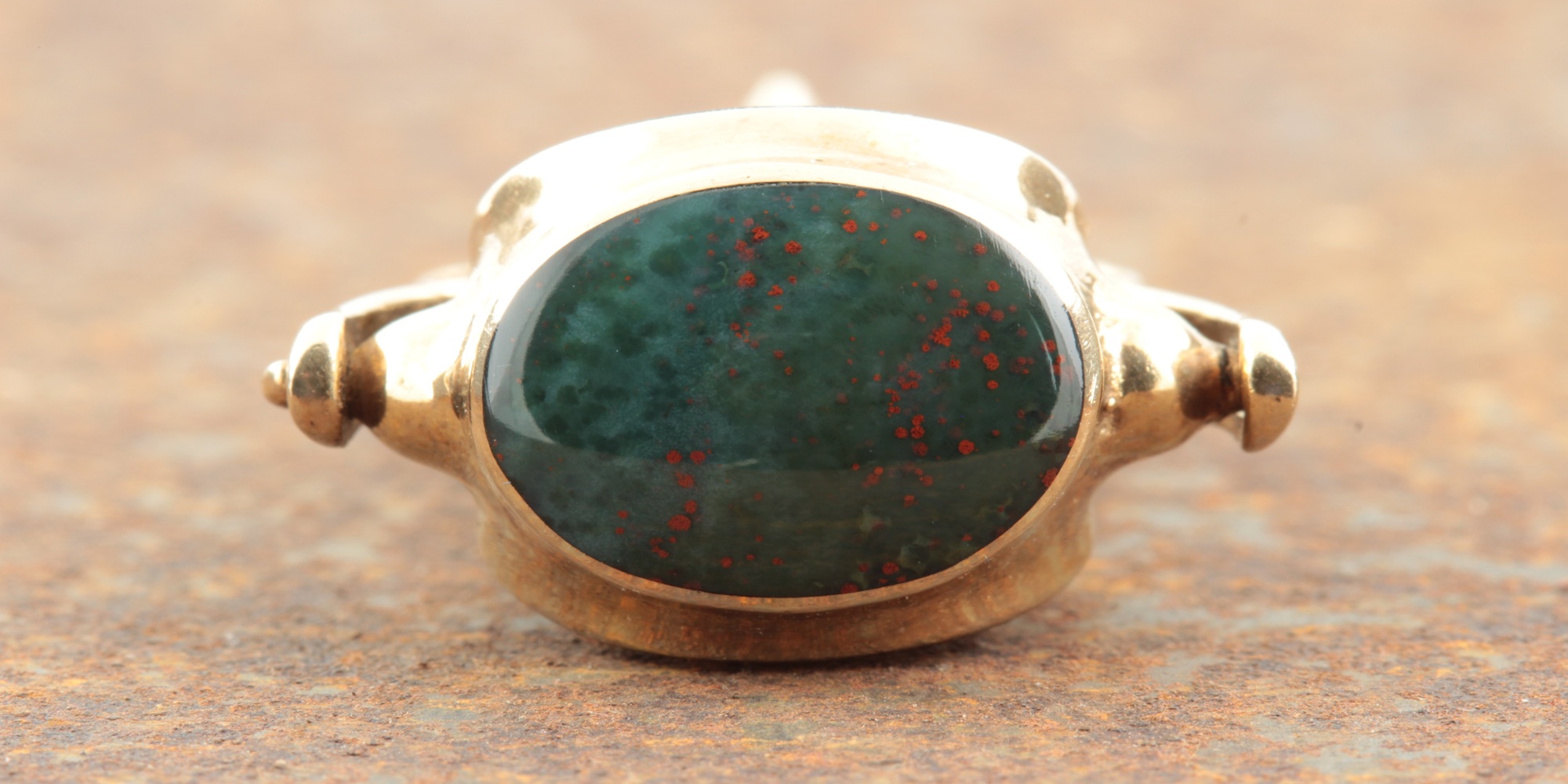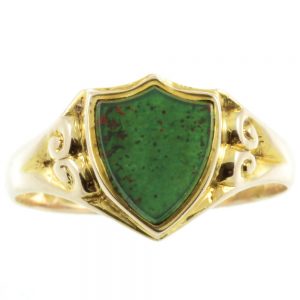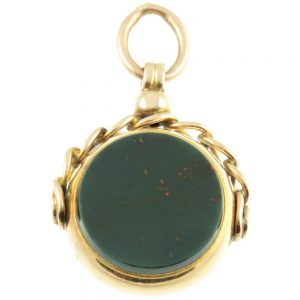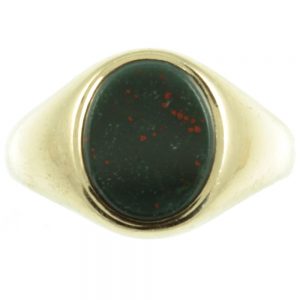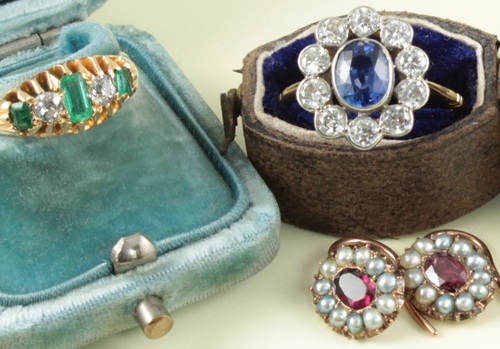Bloodstone
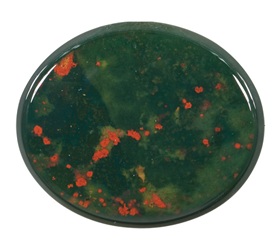 Bloodstone is a dark green, opaque chalcedony with red spots. Chalcedony belongs to the quartz mineral group. Other well-known gemstones in the quartz family include, Agate, Amethyst, Rock Crystal, Smoky Quartz, Rose Quartz, Citrine and Carnelian. Bloodstone is also known as Heliotrope, the name Heliotrope is derived from the Greek words “Sun Turner”. It is thought that this name came about because of how the stone reflects sunlight. This gemstone is made of silicon dioxide, with inclusions of chlorite or hornblende which is responsible for the green colouration. The red spots are caused by the presents of iron oxide. Stones exhibiting a dark green colour with a high number of contrasting bright red spots that are evenly distributed are considered to be the most valuable.
Bloodstone is a dark green, opaque chalcedony with red spots. Chalcedony belongs to the quartz mineral group. Other well-known gemstones in the quartz family include, Agate, Amethyst, Rock Crystal, Smoky Quartz, Rose Quartz, Citrine and Carnelian. Bloodstone is also known as Heliotrope, the name Heliotrope is derived from the Greek words “Sun Turner”. It is thought that this name came about because of how the stone reflects sunlight. This gemstone is made of silicon dioxide, with inclusions of chlorite or hornblende which is responsible for the green colouration. The red spots are caused by the presents of iron oxide. Stones exhibiting a dark green colour with a high number of contrasting bright red spots that are evenly distributed are considered to be the most valuable.
Formation: Bloodstone forms inside cavities and fissures in volcanic rock. As the volcanic rock cools, a silica-rich solution containing impurities of chlorite or hornblende, along with iron oxide collects in these fissures and begins to crystallise. The crystallisation process is extremely slow and requires the presents of heat and pressure over millions of years. The resulting gemstone is considerable harder than the host rock. Over millions of years of erosion and geological proccesses the host rock becomes eroded away, releasing the gemstones within. Which typically get washed down into streams and riverbeds where they will accumulate. It is in these riverbeds that gemstones in general are most easily found. Then miners will follow the deposits back to the source as they deplete the riverbeds. Gold prospecting has also historically followed the same pattern. Starting in riverbeds and following the deposits back to the source, which often leads through ancient dry riverbeds. With some of the largest deposits being found under ancient waterfalls.
Treatment: Leaving aside normal cutting and polishing, there is no treatment applied to Bloodstone.
Durability: Bloodstone has a hardness rating of 6.5 to 7 on the Mohs scale. Which makes it suitable for everyday use. It has excellent resistance to chipping or breaking, due to its crystal structure. However, it can be scratched by hard materials. This gemstone is considered stable and not sensitive to sunlight. Although it is still recommended to store your Bloodstone jewellery in either a soft cloth or pouch to protect it from being scratched by harder gemstones such as diamonds.
Plasma: Plasma is a rarer variety of Bloodstone. Although it is still a chalcedony, it has different characteristics. The Plasma variety is typically darker green in colour and contains very few if any red spots. It can however contain inclusions of white, gold or brown spots. It is also known for its lower transparency.
Meaning and Healing Properties
Bloodstone symbolises protection, strength, courage and good fortune. It is said to have special healing properties, particularly for purification of the blood and to improve circulation. To increase strength and to protect against illness or injury. The stone is also associated with mental clarity, emotional stability and with grounding. Helping the wearer to alleviate feelings of anxiety, fear or impatience.
Chakra: Bloodstone is associated with the root chakra, helping with grounding, stability and security. It also works with the heart chakra.
Birthstone: Bloodstone is the birthstone for March, symbolising strength, vitality and courage. The other birthstone for March is Aquamarine.
Zodiac Astrology: Bloodstone gemstone is associated with the star sign Aries.
History
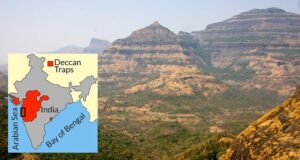 The earliest known Bloodstone mines were in India, dating as far back as 3,000BC. The main deposits are located on the Deccan Plateau in the Deccan Traps. The Deccan Traps are one of the largest volcanic features on Earth. Covering some 200,000 square miles and are estimated at over 1 mile deep. This volcanic formation dates back over 65 million years and produces an abundant number of gemstones including, Agate, Amethyst, Apophyllite, Calcite, Chalcedony, Fluorite, Jasper, Quartz and Zeolite, along with Bloodstone. Today India is still the primary source of Bloodstone globally.
The earliest known Bloodstone mines were in India, dating as far back as 3,000BC. The main deposits are located on the Deccan Plateau in the Deccan Traps. The Deccan Traps are one of the largest volcanic features on Earth. Covering some 200,000 square miles and are estimated at over 1 mile deep. This volcanic formation dates back over 65 million years and produces an abundant number of gemstones including, Agate, Amethyst, Apophyllite, Calcite, Chalcedony, Fluorite, Jasper, Quartz and Zeolite, along with Bloodstone. Today India is still the primary source of Bloodstone globally.
Brazil has a long history of gemstone mining, particularly in the Minas Gerais region dating back to the late 16th century. Bloodstone from Brazil tends to have slightly different characteristics. It is typically a lighter and brighter green colour, with more red spots. It is also common to find both gold and brown spots. Brazil continues to produce a significant amount of the world`s Bloodstone.
Other countries currently producing Bloodstone include, China, Australia, United States, the Czech Republic, Germany, Russia and Scotland.
Folklore
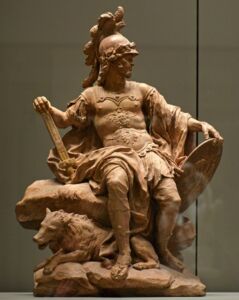 Throughout history, Bloodstone has symbolised courage, strength and vitality. Due to its red spots, the stone has been associated with blood and was believed to have magical powers concerning blood related issues. In India, the ancient people believed that by dipping the stone in water and then placing it on an open wound it would slow or stop the bleeding. In India the gemstone was also considered to be an aphrodisiac, they would consume the stone by grinding it into a fine powder. They also believed it to be a healing and protective stone and they used it in their ayurvedic practices.
Throughout history, Bloodstone has symbolised courage, strength and vitality. Due to its red spots, the stone has been associated with blood and was believed to have magical powers concerning blood related issues. In India, the ancient people believed that by dipping the stone in water and then placing it on an open wound it would slow or stop the bleeding. In India the gemstone was also considered to be an aphrodisiac, they would consume the stone by grinding it into a fine powder. They also believed it to be a healing and protective stone and they used it in their ayurvedic practices.
The ancient Egyptians believed the stone had the ability to purify the blood and that it had the ability to dissolve tumors. Egyptian warriors wore the stone believing it could increase their strength and offer them protection.
Greek mythology: The ancient Greeks believed the gemstone could stop bleeding and could be used to treat blood conditions in general. It was also associated with strength and bravery. As such it was commonly worn into battle. It was popular with Athletes at the time, in the belief it increased strength. The Leyden Papyrus ( 3rd Century AD ) mentions the following about Bloodstone: ” The world has no greater thing, it grants wishes, calms rulers, ensures belief, opens doors, bonds and stone walls will be rent asunder”
Roman mythology: In Roman mythology, Bloodstone was associated with Mars, the god of war. Roman soldiers believed the gemstone could stop bleeding and so wore it into battle. In the first Century AD, Pliny the Elder wrote of the stone that magicians could use the stone to become invisible. He further states that if the gemstone was placed in water in direct sunlight, the stone would reflect the sunlight as a blood red colour. He also stated that the stone could be used to catch the sun`s reflection and allow a person to see a solar eclipse as the moon passed across the sun. The Romans also believed that the stone could protect them from venomous bites.
Medieval Europe: Legend has it that Bloodstone was formed when Jesus Christ was being crucified on the cross. It is said that blood from his wounds fell onto the dark green earth and was turned into stone. This led the gemstone to also be known as the “Martyr`s Stone”. Bloodstone is also associated with Saint Stephen, who was martyred around 36AD. Legend has it that while Saint Stephen was being martyred by stoning, some of his blood fell on the stones and so Bloodstone was formed. During the middle ages, images of Saint Stephen would be carved into Bloodstone, forming intaglios. Both the martyrdom and the intaglios led to the stone sometimes being called “St. Stephen`s Stone”. People in medieval times believed the gemstone held healing powers, particularly in its ability to stop bleeding. There was also widespread belief that the stone could be used in animal husbandry.
Famous Bloodstones
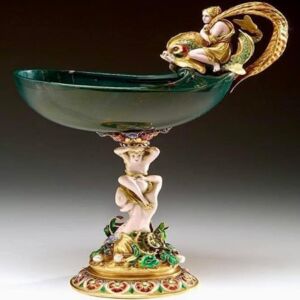
Bloodstone bowl, signed Morel & Sevres.
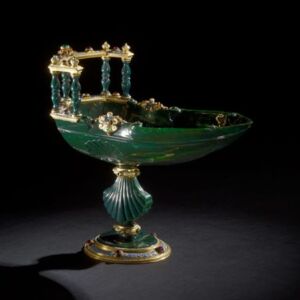
Bloodstone standing cup, British Museum.
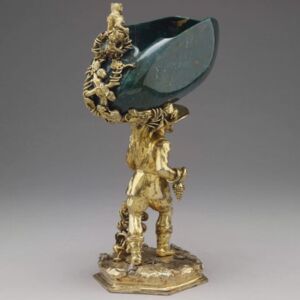
Bloodstone standing cup, by Reinhold Vasters.
Bloodstone Gemological Data
Colour: Dark green, red spots.
Mineral group: Quartz.
Moh`s hardness: 6.5 – 7
Density: 2.58 – 2.64
Cleavage: None.
Fracture: Conchoidal.
Crystal system: Trigonal.
Transparency: Opaque.
Chemical composition: SiO2 silicon dioxide.
Refractive index: 1.530 – 1.543
Double refraction: 0.003 to 0.009
Pleochroism: Absent.
Dispersion: None.
Fluorescence: None.
For Researchers and Journalists: Citing This Article
Recommended Citation (MLA) Format:
Hoyne, John. “Bloodstone Gemstone: Formation, History and Folklore.” Carus Jewellery, n.d., https://carusjewellery.com/bloodstone/.
You can also get in touch with Carusjewellery.com on Facebook , were you may leave any comments or questions you may have about this article.

